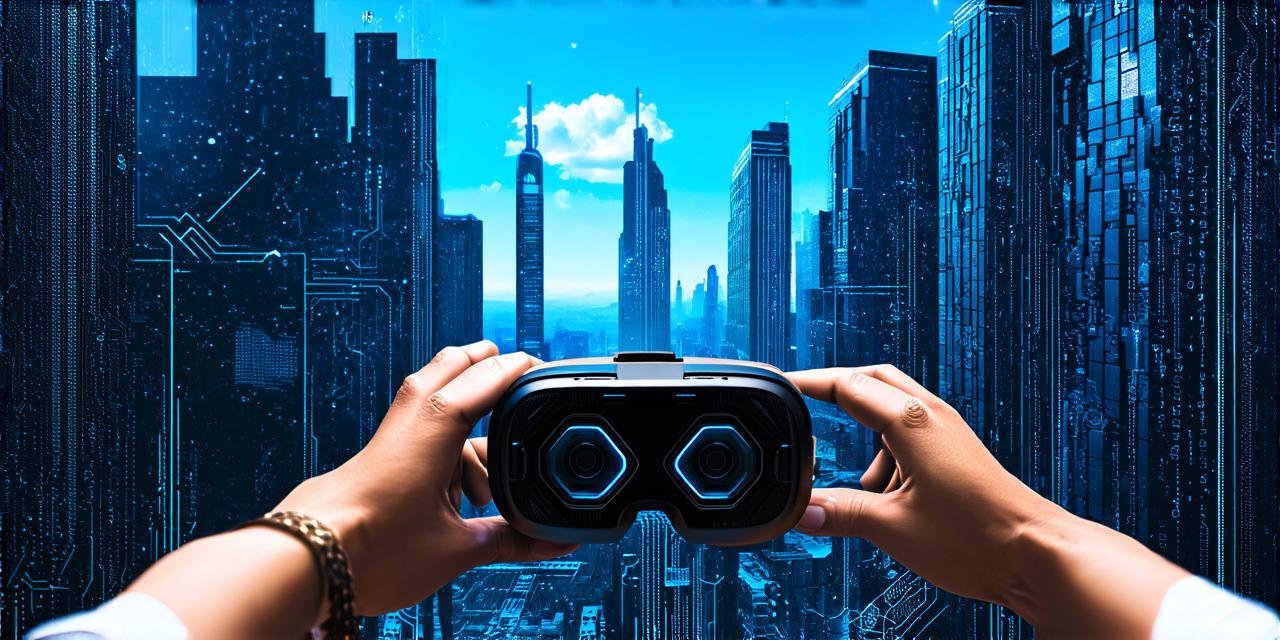Virtual reality (VR) technology has come a long way since its inception, and it has opened up new possibilities for people to experience immersive environments. With VR, users can interact with virtual objects and simulate real-life scenarios, making it an exciting field for developers to explore. However, the question of who is the rightful owner of VR technology arises when we consider the role that different stakeholders have played in its development and advancement. In this article, we will examine the various players involved in the development of VR technology and their contributions to the field.
The Inventors:
One might argue that the inventors who created the foundational technologies of VR are the rightful owners. The first person to use a head-mounted display (HMD) for virtual environments was Ivan Sutherland, who developed Sketchpad in 1968. Later, in the 1990s, Jaron Lanier and his team at Silicon Graphics developed the first VR headset, which revolutionized the way people experienced virtual worlds.
While these inventors played a crucial role in laying the groundwork for VR technology, they are not the only ones who can claim ownership. The development of VR technology has been a collaborative effort that has involved many researchers, engineers, and developers.
The Companies:
Companies have also played an essential role in advancing VR technology. One of the first companies to invest heavily in VR was Oculus VR, which was acquired by Facebook in 2014. Since then, Oculus has continued to innovate and develop new VR technologies, such as the Oculus Quest 2.
Another major player in the VR industry is Sony, which developed the PlayStation VR headset and ecosystem. Sony’s success in the VR market is largely due to its ability to integrate VR technology into existing gaming platforms, making it more accessible to a broader audience.
While companies like Oculus and Sony have been instrumental in advancing VR technology, they are not the only ones with a stake in the industry. There are many other companies that specialize in VR development, such as HTC, which developed the Vive headset, and Samsung, which has created its own line of VR devices.
The Open-Source Community:
In addition to companies and inventors, there is also an open-source community that has contributed significantly to the development of VR technology. The open-source movement has allowed developers to collaborate on projects, share code, and build upon each other’s work, leading to faster innovation and more diverse experiences.
Open-source VR platforms like Unity and Unreal Engine have become popular tools for developers to create immersive virtual environments. These platforms are free and open to anyone who wants to use them, making it easier for developers to get started in the VR industry.
The Consumers:
Lastly, consumers also play a role in determining who the rightful owners of VR technology are. As users of VR devices, consumers have the power to influence which technologies and platforms succeed or fail. They can choose to support companies that prioritize innovation and user experience or opt for open-source solutions that provide greater flexibility and customization options.
Case Studies:
Let’s examine some real-life examples of how different stakeholders have contributed to the development of VR technology.
Inventors:
Ivan Sutherland is widely considered one of the pioneers of VR technology. In 1968, he developed Sketchpad, which allowed users to create and interact with virtual objects using a head-mounted display (HMD). Sketchpad was a significant milestone in VR development, as it demonstrated that immersive environments could be created using computer technology.
Companies:
Oculus VR is one of the most well-known companies in the VR industry. In 2014, Facebook acquired Oculus for $2 billion, and since then, Oculus has continued to innovate and develop new VR technologies. One example of this is the Oculus Quest 2, which was released in 2020 and has become one of the most popular VR devices on the market.

Open-Source Community:
The open-source community has also played a significant role in the development of VR technology. One example is the Unity game engine, which has become a popular tool for creating immersive virtual environments. Unity is free and open-source, making it accessible to anyone who wants to use it. Many developers have contributed to the platform, creating new tools, plugins, and assets that have expanded its capabilities.
Consumers:
Consumers have also had a significant impact on the development of VR technology. For example, the success of the PlayStation VR headset and ecosystem can be largely attributed to Sony’s ability to integrate VR technology into existing gaming platforms. This made VR more accessible to a broader audience, leading to increased demand for VR devices and content.
Expert Opinions:
To gain a better understanding of who the rightful owners of VR technology are, we can look at expert opinions from industry leaders and researchers.
Real-Life Examples:
To further illustrate how different stakeholders have contributed to the development of VR technology, let’s look at some real-life examples.
Inventors:
One example of an inventor who has contributed significantly to VR technology is Dr. Jaap van Doren, a professor of computer science at the University of Twente in the Netherlands. Dr. van Doren has developed several groundbreaking VR technologies, including the use of eye-tracking for more immersive experiences and the creation of interactive 3D models using machine learning algorithms.
Companies:
Another example of a company that has contributed to VR technology is Samsung. Samsung has created its own line of VR devices, including the Galaxy Gear VR headset, which was launched in 2015. Samsung has also been working on new VR technologies, such as haptic feedback and advanced eye-tracking systems, which could revolutionize the way we experience virtual environments.
Open-Source Community:
The open-source community has also contributed significantly to VR technology development. One example is the Unreal Engine, which is a popular tool for creating immersive virtual environments. Unreal Engine is free and open-source, making it accessible to anyone who wants to use it. Many developers have contributed to the platform, creating new tools, plugins, and assets that have expanded its capabilities.
Consumers:
Finally, consumers have played a significant role in determining which VR technologies and platforms succeed or fail. For example, the success of the Oculus Quest 2 can be largely attributed to its affordability and ease of use, making it an attractive option for both casual and hardcore gamers.
Summary:
The question of who the rightful owners of VR technology are is a complex one that requires considering the contributions of inventors, companies, open-source communities, and consumers. Ultimately, VR technology development is best served by collaboration between these different stakeholders, working together to create more immersive, innovative, and accessible virtual environments.
